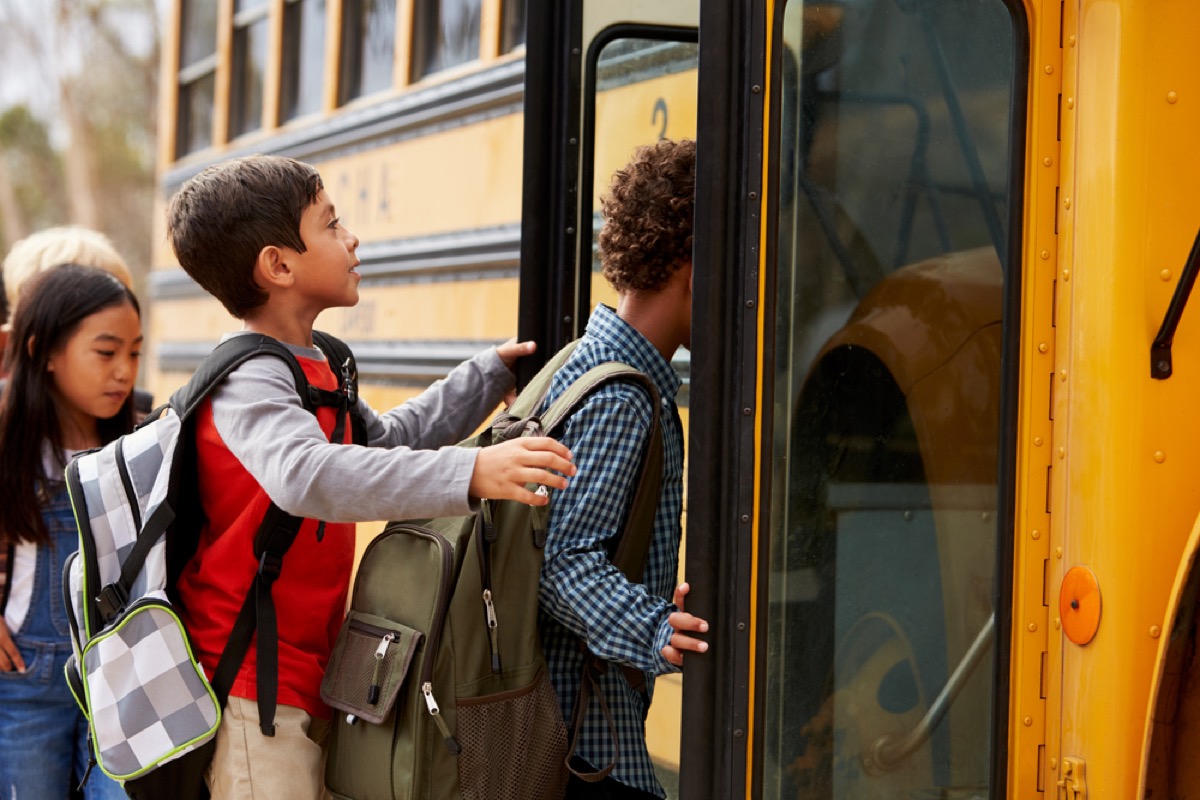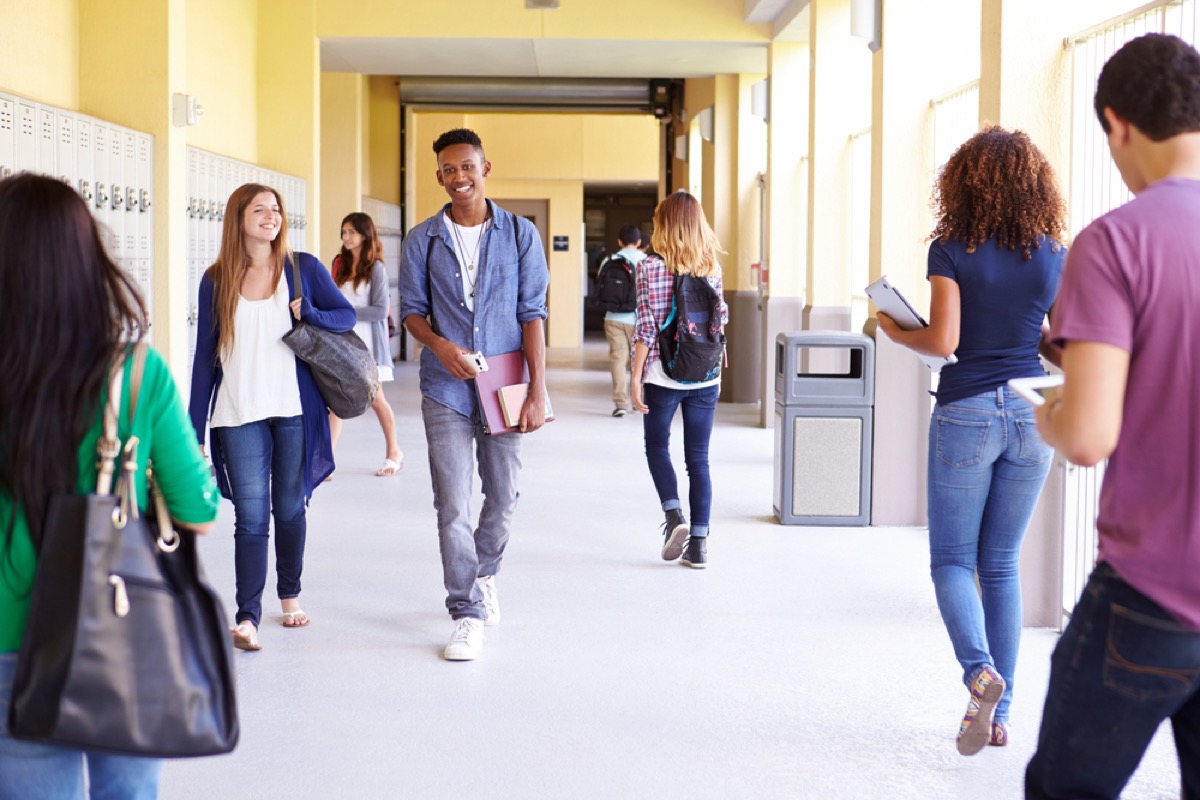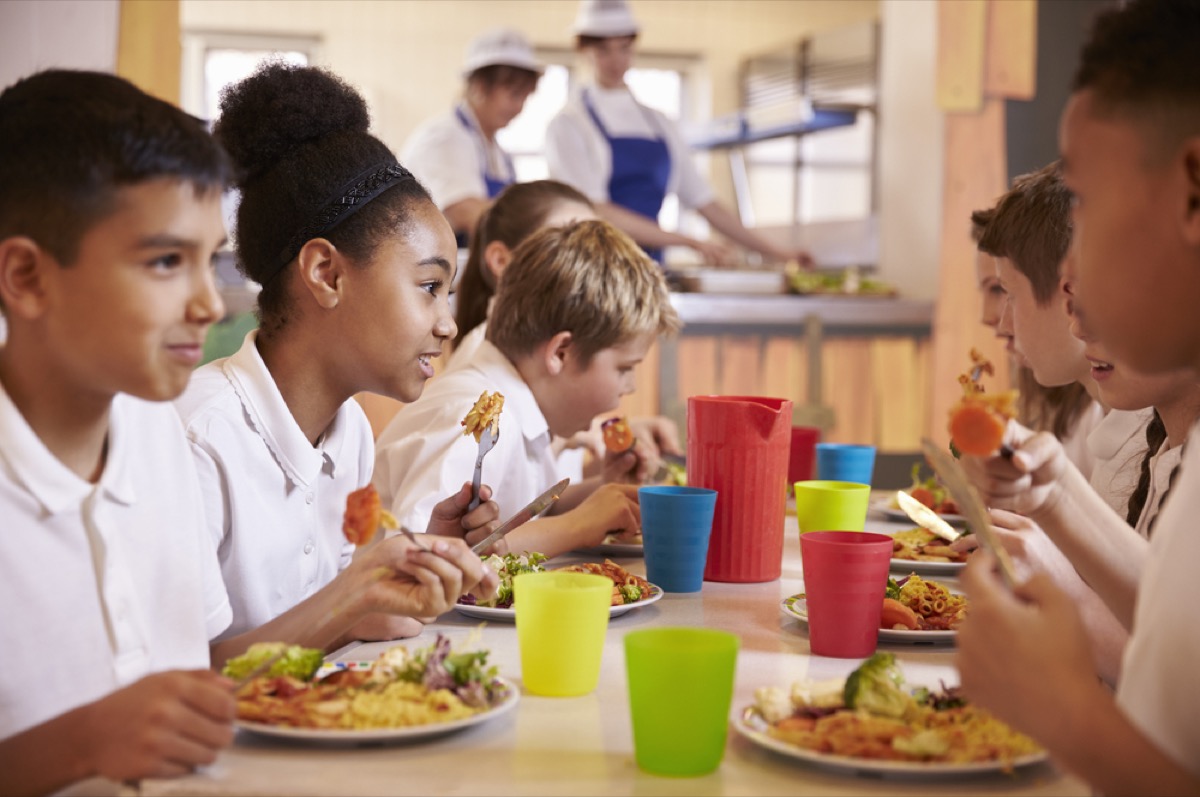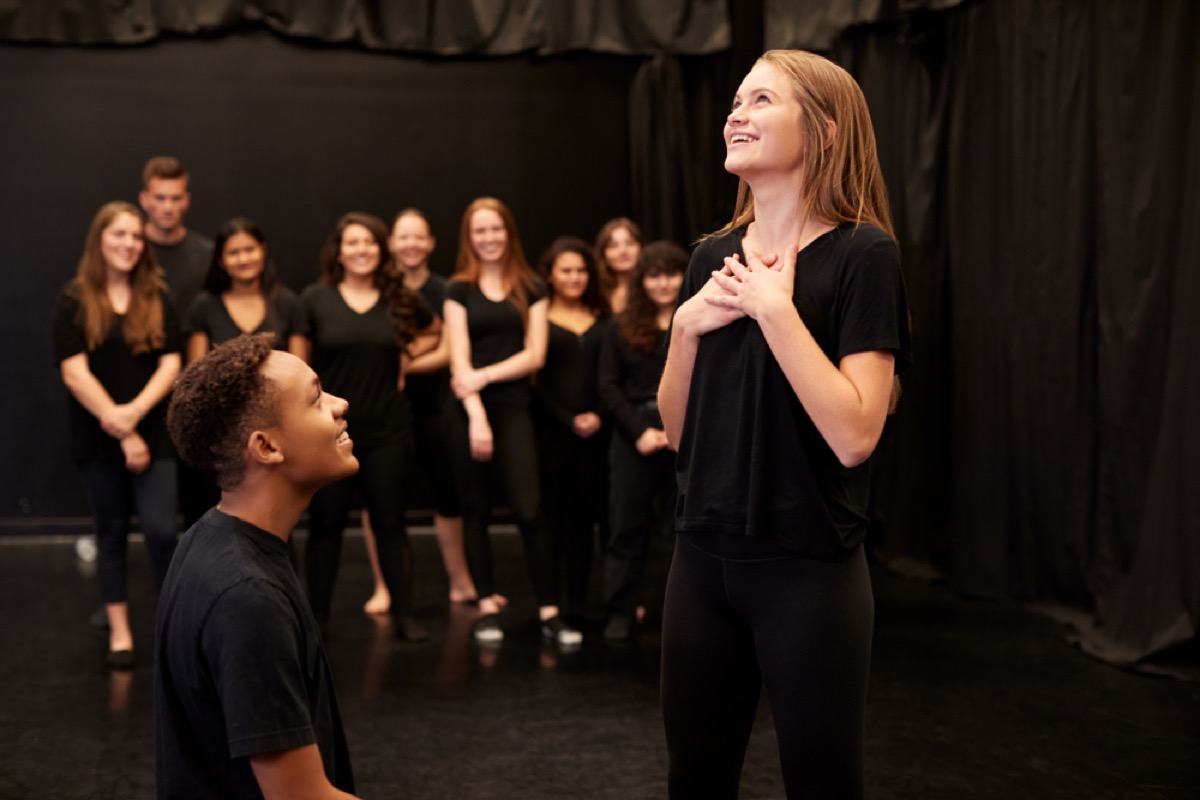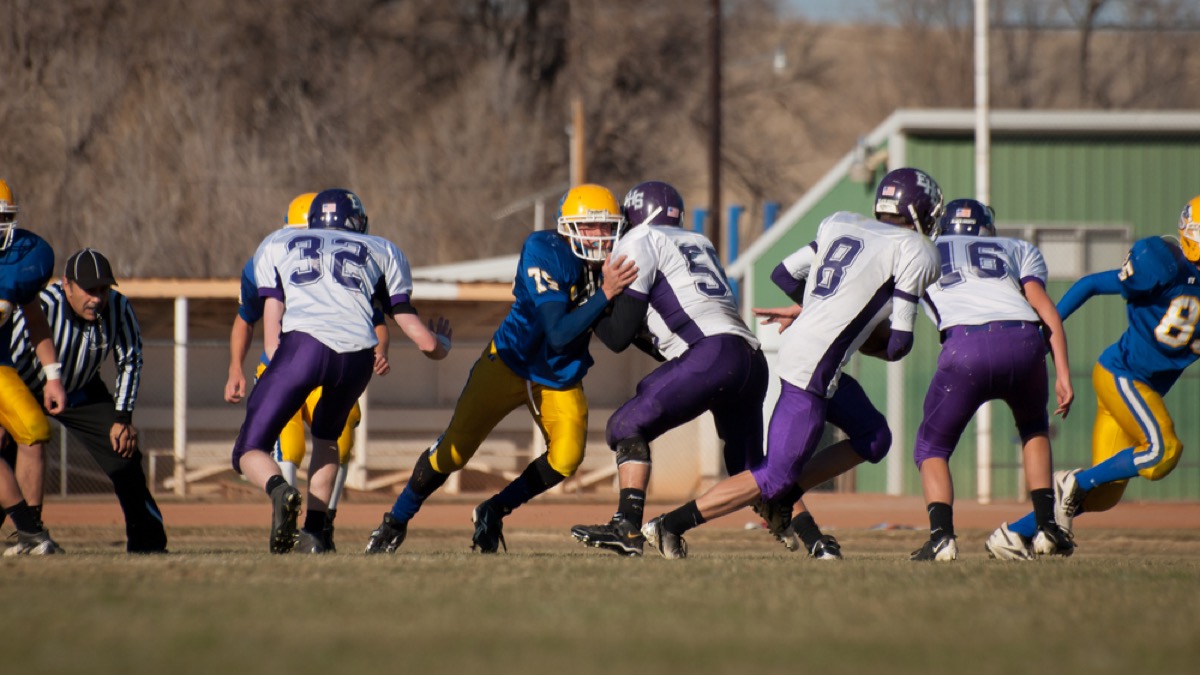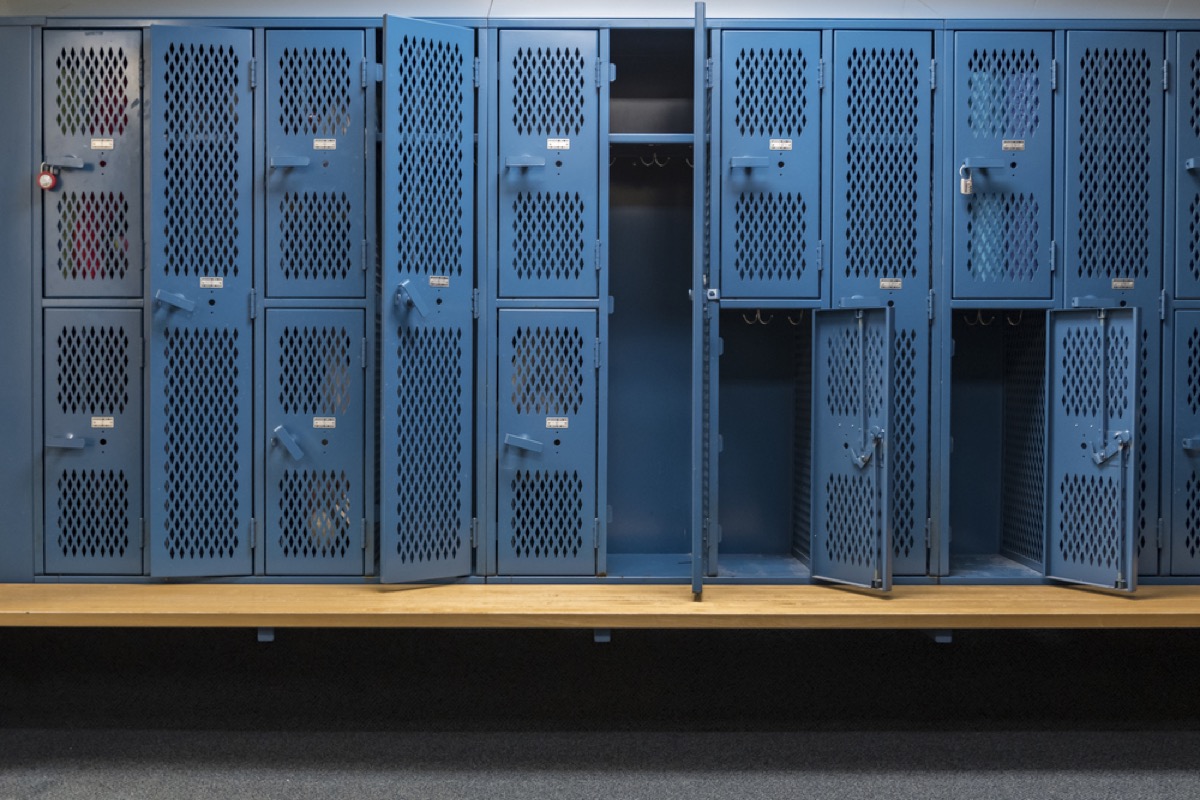The question, then, is how to mitigate those risks. In a piece for The New York Times, medical doctors Ezekiel J. Emanuel, MD, and James Phillips, MD, and infectious disease epidemiologist Saskia Popescu, PhD, have outlined how to open schools safely by ranking the risk of spreading coronavirus during various school activities, from how students get there, to how they eat lunch, to the extracurriculars they take part in. Risks at school aside, “schools cannot reopen safely when community transmission is high and climbing,” the writers note. They recommend that schools only open in places with fewer than 75 new COVID cases per 100,000 people over seven days, and that maintain a positive test rate lower than 5 percent. Once those factors are accounted for, the key to bringing kids back to school is avoiding these high-risk activities that could increase the spread of the virus. And for more on reopening schools, These Are the Only 2 Ways Schools Can Open Safely, Harvard Doctor Says. When it comes to “transportation to and from school,” the school bus is considered “high risk,” per these experts. Public transportation is also a high-risk option. The methods of transportation that carry the lowest risk of spreading coronavirus are walking, riding a bike, or being driven by another household member. Carpooling is considered “medium risk.” And if you’re wondering how more medical professionals feel, 70 Percent of Doctors Say This Is When They’ll Send Their Kids Back to School. When it comes to standard school activities, the experts write, “we think that with proper funding, classrooms can be made relatively safe.” The biggest risk comes from what students do between classes and the amount of time they spend at their lockers, particularly if the school hallways are indoors. “Schools should also bar the use of lockers because they cause crowding and congestion and therefore increase the risk of transmission,” they write. Indoor cafeteria dining might have to be a thing of the past, because “crowding would be likely to encourage spread,” per the experts in The New York Times. Instead, students could pick up prepackaged meals, a low-risk alternative, and eat them outside (“low risk”) or in classrooms (“medium risk”). And for more on how schools will change, check out these 7 Things You’ll Never See in Schools Again After Coronavirus. Unfortunately, band and orchestra are activities that fall under the category of “high risk” for these experts. “We know that this will be both disappointing and difficult,” they write. “But close contact for prolonged periods of time with forced exhalations is what increases the risk of transmission.“ae0fcc31ae342fd3a1346ebb1f342fcb Arts will indeed be hard-hit by new COVID restrictions, but choir practice and performances can easily spread the virus. And that’s true outside of schools, as well—one of the most notable early super-spreader events was a church choir practice that led to 52 coronavirus infections. Finally, rehearsing and performing school plays shouldn’t be on the table either. Just as Broadway continues to be shut down, high school plays and musicals are too risky to go on, these experts suggest. And for more up-to-date information, sign up for our daily newsletter. “Playing football and basketball and wrestling simply cannot be done safely,” the experts write. “We understand that missing a season could lead to missed scholarships for student athletes. But these activities will have to wait a year.” There are low-risk alternatives when it comes to school athletics, however: The New York Times writers recommend outdoor playgrounds (with mask use) and non-contact sports like track. Along those same lines, locker rooms could easily increase the spread of COVID at school, as students can congregate around individuals lockers. And if you’ll be keeping your kids at home in the fall, discover 13 Amazing Homeschooling Tips From Actual Teachers.
